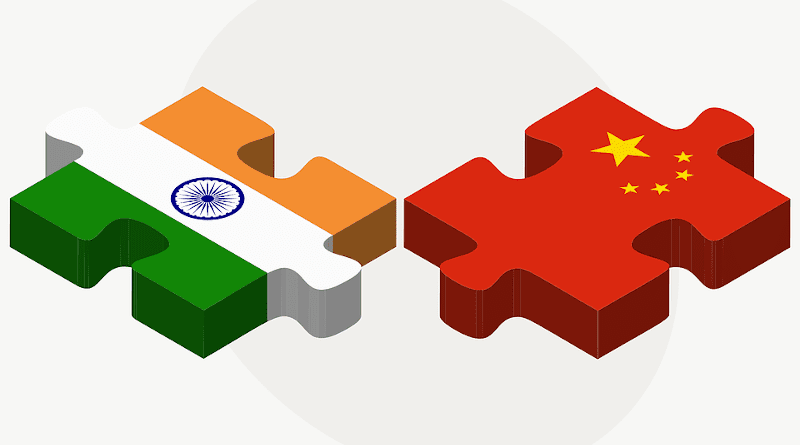Chinese Supply Chain Makers Encouraged To Shift To India By USA Assemblers – Analysis
Amid the entire world grappling with crisis, India sprung a few surprises with the fastest growth in economy, while balancing the global power between west and east owing to sanctions. Japan tilted towards India, despite India withdrawing from RCEP (Regional Comprehensive Economic Partnership), the biggest trade block comprising of ASEAN -10 + China, Japan, Australia, South Korea, and New Zealand. The USA is enthralled to make India a major supply chain hub as an alternative to China. In addition, Chinese supply chain makers are being encouraged to shift to India by their US and western assemblers.
Japanese investment surged in India against a fall in investment in China and ASEAN majors. Its investment in India increased by 11.2 percent in 2022, against a plunge by 54 percent in China during the same period. In ASEAN majors, Japanese investment fell by 71.2 percent in Singapore, by 18.4 percent in Vietnam and 63.8 percent in Hong Kong in 2022.
Following suit, USA and western assemblers vowed to shift to India from China. USA investment in India made an uninterrupted growth during past 4 years. During 2019 to 2022, US investment in India increased by over 26.6 percent with an annual average growth by 6-7 percent.
In addition, they encouraged their Chinese supply chain manufacturers to shift factories to India. USA and western assemblers viewed India a better destination for manufacture of the supply chain than China. Even though India is lagging behind China in critical components, they preferred India for long term benefits.
Eventually, Chinese investment spurred in India. During the first 9 months of 2023-24 (April- September), Chinese investment in India increased by 320.7 percent over the same period in the preceding year.
India emerged as one of the rising attractions for Japan and US investment in South East Asia, as an alternative to China. While US investment in China plateaued post COVID, investment in India increased. Not only in China, US investment fell in other South East countries also, such as Hong Kong, Malaysia, Indonesia, South Korea. This demonstrates India’s rising power for outbidding China and other South East countries.
Besides India emerging as an economic power in the post COVID era, it downplayed its competitor Vietnam for Japanese investment. Japanese investment in Vietnam made a stark fall in 2022, by 18.4 percent, after stoking a growth of 75.7 percent in 2021.
Vietnam’s overdependence on China could be one the reasons for that country’s deceleration in Japanese investment. China has been the main source to support Vietnam’s growth in electronic and electrical items. This manifests if China rises, Vietnam shines and vice-versa.
On the contrary, India’s overdependence on China declined. During 2022-23, imports of electronic and electrical items from China declined by 4.5 percent.
This demonstrates that India’s overdependence on China for the supply chain is in the deceleration due to its domestic growth in manufacturing capacity. This might have led western assemblers and USA to encourage Chinese supply chain manufacturers to shift to India and sustain their business relations in the long run.
The shift of Apple of the USA to India is a case in point. Apple vowed to make India the global hub for iPhone manufacturing . About one-third of Apple’s global iPhone production will be staked in India in the next 3-4 years, according to the New York Times. Apple asked its Chinese supply chain manufacturer to shift to India, according to the Washington Post.
In a significant move, Japan signed a MOU in July 2023 with India to collaborate in the fields of semiconductor design, manufacturing, research, talent development and chip supply chain. Rapidus Corporation of Japan will be the key player in semiconductor manufacturing in India.
The annual average GDP growth in India is expected to be 6.5 -7 percent till 2029. JBIC of Japan applauded India’s shining growth. It reiterated India the most promising destination for Japanese business consecutively for 2 years, viz 2021 and 2022, beating out China in its annual survey.
The US-China face off and the Ukraine war added a new face of FDI culture in the world. Morgan Stanley – the global leader for financial services and investment banking – portrayed India as the most attractive destination for foreign investment in Asian emerging markets. It upgraded India from the 6th position to the top in the region.
Robust growth in GDP in the 2nd quarter of 2023-24 (July – September) and the structural changes in the growth parameters established India’s capacity for larger stake for alternative supply chain. During the period, India pitched 7.4 percent GDP growth, with manufacturing taking a lead in triggering the growth. It increased by 13.9 percent during the quarter – the fastest ever growth since COVID.
Last June 21, the US announced multiple policy challenges – all centred on downplaying China. The most important gesture the US made, according to global political and economic analysts, was to acknowledge India ‘s leadership in Indo-Pacific area.
To this end, India proved to be the front runner to play a leading role in the Asian economy, relegating Chinese hegemony and tripping ASEAN paranoia for China’s foray.

